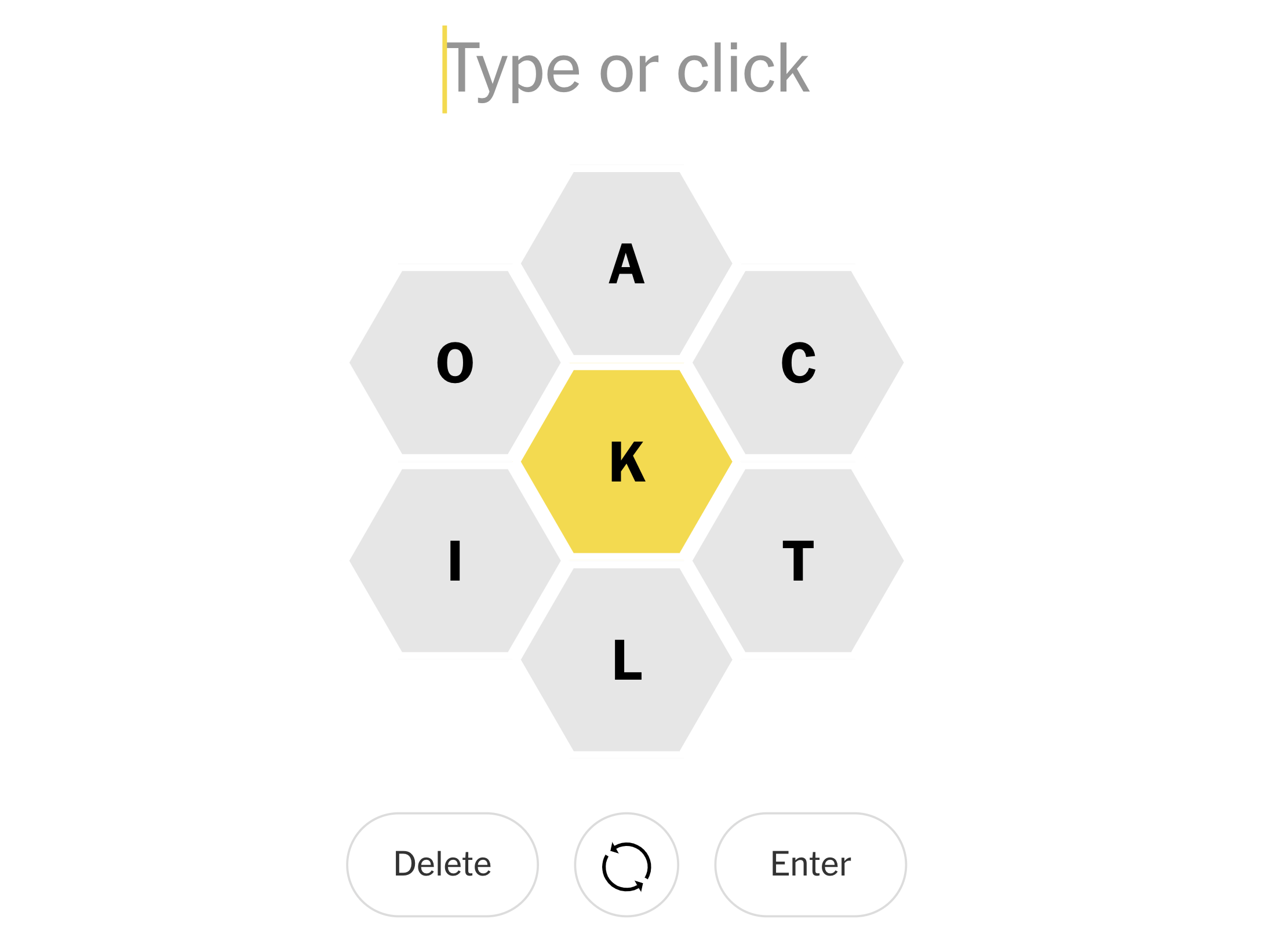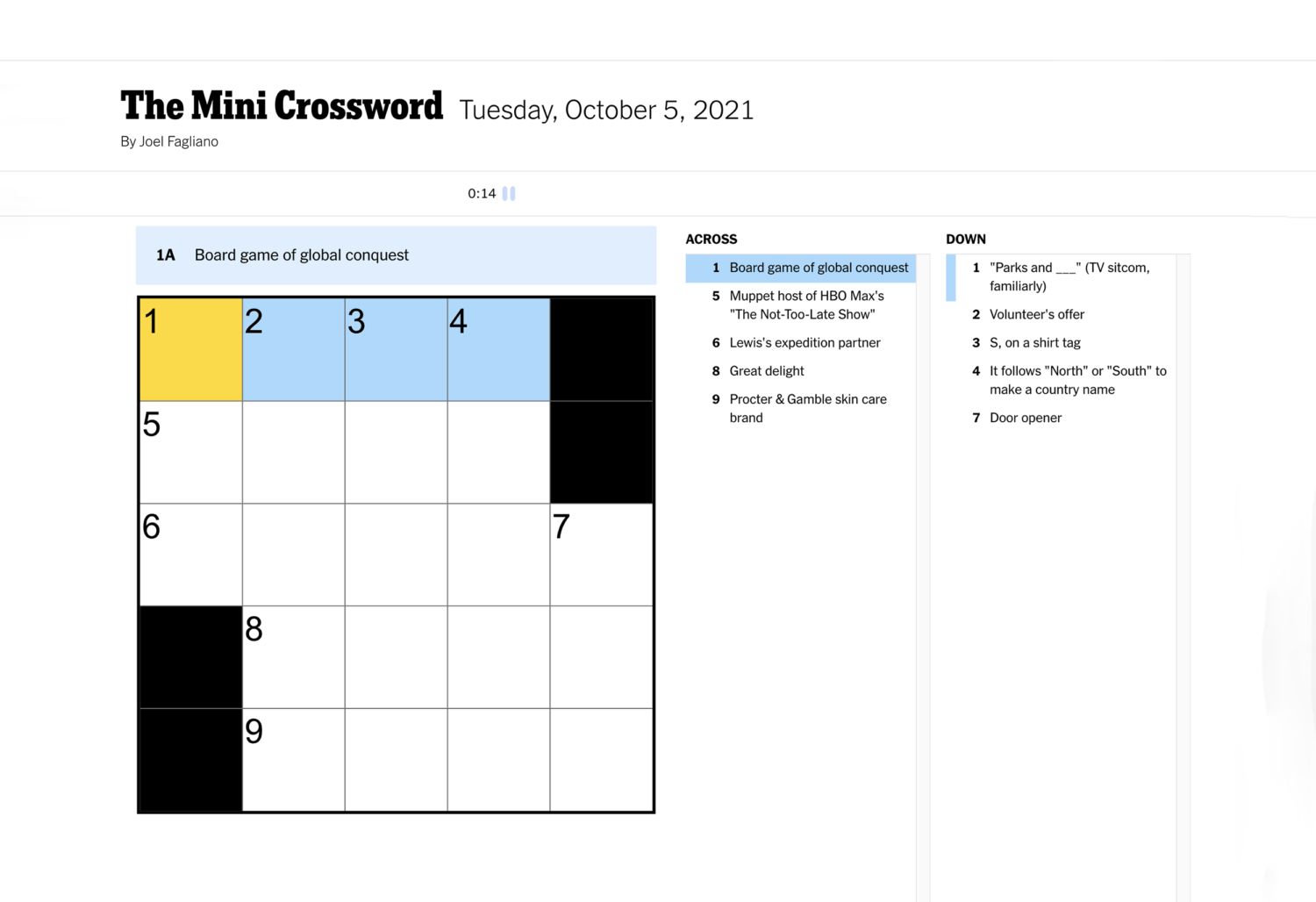The Mini, a compact five-by-five daily crossword, as the diminutive name suggests, is built to be addictive. It’s free, it’s easy to work — but not ridiculously easy — a morning brain starter that can usually be solved in under two minutes.
That sounds like an amusing but tiny thing in the vast expanse of New York Times content. However, it is one of the big stars of the company’s popular and lucrative Games division.
Paid digital subscriptions to Games stand at 930,000. With expansion plans in the works, the 1 million mark is in sight. Along with the Times’ newer Cooking vertical, it accounted for about 40% of the paid digital subscriber growth the company reported during the second quarter.
At $40 per year, or a bit higher rate monthly, that would yield annual subscription revenue of roughly $40 million. I assume Games is highly profitable, too. Those puzzles don’t write themselves, but neither do they require the worldwide staff of 1,750 journalists dedicated to preparing the Times news report.
The Mini has been a small cornerstone of the Times’ Crossword app since both launched in August 2014. No trade secret — it is meant to be a free, habit-forming gateway to the big daily Crossword for which there is a charge.
The Mini has had a single author since its launch, Joel Fagliano, not yet 30. He doubles as one of the editors of the bigger puzzle. A prodigy, Fagliano first tried adult crosswords on the plane on a trip to Israel. He sold his first puzzle to the Times at age 17 and became an intern, then assistant, to Times crossword guru Will Shortz. In essence, he has never had another job.
Fagliano was happy to explain in an interview what he tries to build into The Mini. “It has speed,” he said. “We can be much more reactive to the news.” For instance, there was a clue a month ago asking the U.S. Open women’s tennis champion Raducanu’s first name (Emma) days after her victory.
Another principle, he said, is “don’t include any crossword-ese” — those arcane words that appear in crosswords but hardly ever in real life.
He learned sometime back that a key to writing puzzles successfully is “to understand your audience, create for them rather than what you would want to solve” or what puzzle-writing peers would admire.
Five letters max is a bit constricting (except on Saturdays, when the grid expands to seven by seven) but Fagliano makes the most of it, sprinkling in abbreviations, slang and compound answers. Example from Tuesday: Clue — Volunteer’s offer. Answer: Illgo.
A few clues venture into the cryptic — single-word puzzles within the bigger puzzle — a format especially popular in the United Kingdom. Example: Clue — What’s up? (three letters). Answer — Sky.
Fagliano does follow a formula of sorts: “six or seven clues that are pretty easy, two that are trivia and two that are a bit more cryptic.”
The short completion time fits the start of the workday. Limbering up your mind, you’re not stealing much of your time, or your employer’s. The motivation, though, is the same as for bigger puzzles, Fagliano said. “You feel clever when you solve them.”
Fagliano has offered more detail on his creative process in a piece he wrote, and a Q&A, both in the Times.
The Mini and the daily Crossword now have company from newer New York Times games, such as “Tiles,” based on matching patterns; and “Spelling Bee,” a new star of the portfolio that took a year of beta testing to develop.

(Screenshot/The New York Times)
Deceptively simple-looking, Spelling Bee asks the solver to build words out of seven letters. Kinda like Scrabble, but not exactly. One letter must be included in any answer. Crucially, repeating letters is allowed, often opening up dozens of hard-to-think-of longer word options. Unlike The Mini, it’s frustratingly difficult.
More puzzles are under development in the Times’ test kitchen, said Jonathan Knight, general manager of Games, though he declined for competitive reasons to discuss particulars.
Appearances to the contrary, Knight said, “game-making is a team sport, a complex set of disciplines.” The division has its own tech team of 18, supplying design templates and other production aids so crossword authors can stick to the creative aspect. “You want your race car drivers to have the best cars,” Knight said.
Knight came to the Times just over a year ago after a 25-year career elsewhere on the business side of digital gaming. No surprise there, since crosswords and other games are undergoing their own version of digital transformation.
The Mini and The Crossword still appear in the print edition of the Times, along with some other word games. The digital version of The Mini is the superior one, though, since it is timed. You can compete against yourself (my personal best is 1:13) or for bragging rights among friends.
Spelling Bee is best played in its digital format. Tiles is digital-only and does not translate to print. I am pretty sure that will be the case for future product offerings.
Besides tracking subscriptions, Knight monitors traffic — roughly 2 million visits per week in the second quarter. That was 25% year-to-year growth, he said, a particularly strong comparative result given that the 2020 second quarter was the height of the pandemic, leaving most people without options for amusement except at home.
The Mini format, like sudoku, can be easily replicated. The Washington Post, Los Angeles Times, AARP and The Atlantic all publish versions, also free and typically financially supported by a pre-roll ad rather than subscriptions. (The website version of The Mini does have small display ads.)
In quarterly earnings conference calls, Times CEO Meredith Kopit Levien always mentions the role of the verticals in digital subscription growth. Cooking has risen to 830,000 subscriptions as of the end of the second quarter. However, those results remain in the background to news subscription totals in the company’s own report and news coverage of earnings.
In the most recent quarterly earnings conference call, Kopit Levien said that Games and Cooking are targeted for a major investment in expansion. (The company tested Parenting as a third vertical but kept it as a content area on the news site.)
More recently the Times has started a paid version of its Wirecutter product recommendation site, and it has become a big player in podcasts and documentaries. It has also started charging for 18 of its newsletters.
Mark all that down as prudent and opportunistic diversification.
Leaning partly on discounted introductory rates and marketing for news, the Times has kept the digital number growing by six-figure amounts every quarter for the last five years.
But news cycles come and go. A return to a pre-Trump, pre-pandemic, more normal run of news doubtless has caused at least some audience erosion. The Times digital total keeps growing just the same thanks to a little help from The Mini and its siblings.







